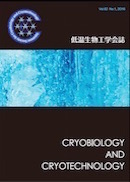Volume 64, Issue 2
Displaying 1-12 of 12 articles from this issue
- |<
- <
- 1
- >
- >|
-
2019Volume 64Issue 2 Pages i-v
Published: 2019
Released on J-STAGE: February 01, 2019
Download PDF (941K) -
2019Volume 64Issue 2 Pages info-1-
Published: 2019
Released on J-STAGE: February 01, 2019
Download PDF (783K) -
2019Volume 64Issue 2 Pages 53-59
Published: 2019
Released on J-STAGE: February 01, 2019
Download PDF (2560K) -
2019Volume 64Issue 2 Pages 61-65
Published: 2019
Released on J-STAGE: February 01, 2019
Download PDF (1560K) -
2019Volume 64Issue 2 Pages 67-73
Published: 2019
Released on J-STAGE: February 01, 2019
Download PDF (1879K) -
2019Volume 64Issue 2 Pages 75-83
Published: 2019
Released on J-STAGE: February 01, 2019
Download PDF (2328K) -
2019Volume 64Issue 2 Pages 85-89
Published: 2019
Released on J-STAGE: February 01, 2019
Download PDF (1624K) -
2019Volume 64Issue 2 Pages 91-95
Published: 2019
Released on J-STAGE: February 01, 2019
Download PDF (1365K) -
2019Volume 64Issue 2 Pages 97-100
Published: 2019
Released on J-STAGE: February 01, 2019
Download PDF (2121K) -
2019Volume 64Issue 2 Pages 101-105
Published: 2019
Released on J-STAGE: February 01, 2019
Download PDF (1922K) -
2019Volume 64Issue 2 Pages 107-110
Published: 2019
Released on J-STAGE: February 01, 2019
Download PDF (846K) -
2019Volume 64Issue 2 Pages 111-119
Published: 2019
Released on J-STAGE: February 01, 2019
Download PDF (1294K)
- |<
- <
- 1
- >
- >|
